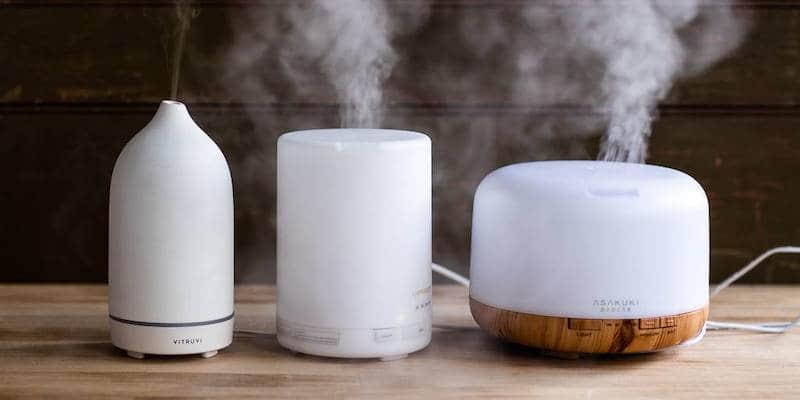Which aromatherapy diffuser is best for You?
This is a question we get asked frequently. And the answer, of course, is “it depends.”
The best aromatherapy diffuser for you depends on your planned usage.
Nebulizing Diffusers: Zap Germs
If you want to saturate the air of a room with your chosen oil or blend the nebulizer is for you. When someone in my family feels like they are “coming down with something,” that virusey, achy feeling, I fill the glass nebulizer with our favorite anti-viral or anti-bacterial oils and let it run all night, filling my bedroom with really powerful oils. Odds are when I wake up in the morning, I’ll be over whatever big bad bug was trying to attack. The nebulizing diffusers are more powerful when you have therapeutic needs.
Our Osuman V3 model can fill a room of about 300 square feet with aromatic vapours.
The small and nearly silent Magnificent is for smaller areas, recommended for 150 square feet or smaller.
The advantage of the Nebulizer is obviously that it does the most effective job of filling the air with microscopic particles of your chosen oil.
The disadvantages are twofold. First, the nebulizers are fairly noisy. They are, after all, powered by aquarium pumps. Some people don’t mind the noise, reacting to it as a “white noise” background hum. Others find it bothersome. If noise is apt to be an issue, and your area is small, by all means choose the Magnificent model.
Second: The nebulizing diffusers tend to require higher maintenance than any of our other options. First, putting the essential oil into the glass nebulizer can be a bit tricky. I finally gave in to reality and started using a pipette, after spilling oil while trying to pour from the bottle into the glass orifice. Also, the glass nebulizer (together with the attached silicone tube) needs cleaning occasionally. I suspect I’m not the only one who has let the nebulizer stand with oils in it, allowing them to react with the oxygen in the air and get all thick and “gunky.” The best way to clean them is to add high proof rubbing alcohol (90% works best!) to dissolve the accumulated oils, drain, and air dry.
Also, the nebulizer can not be used with the very thick, viscous oils… benzoin, vetiver, etc. They will totally clog it and won’t diffuse unless blended with other, thinner, essential oils. , Try to use 100% pure essential oil, Never use a carrier oil in the nebulizer, or an essential oil diluted in a carrier. It will ruin the glass nebulizer and void the warranty.
COOL MIST: For Kids
If you have young children who are prone to colds, ear infections, etc. the odds are you’ve been told to run a humidifier in their bedroom. The Classic Ultrasonic aromatherapy Diffuser (sometimes called an “ultrasonic aromatherapy diffuser” or “ultrasonic nebuliser”) functions both as an aromatherapy diffuser AND a humidifier. It holds a small amount of water that stays at room temperature just in case an active child manages to spill it—no danger of scalding. The essential oils and water are diffused by ultrasound waves, adding humidity to the air while filling the room with aromatics.
The advantages of this one are obvious. No breakable glass parts, the added humidity in the air. The machine shuts itself off when the water level drops too far. The machine can be set to cycle on and off. I’m told that children are often fascinated by the light. (Memories of my mother’s LavaLamp…it has that sort of fascination!)
Disadvantages? If you live in a damp/humid climate you might not want to add extra moisture to the air in your home. And there are some who find the light an irritant. It may not be shut off while the machine is operating.
ON THE GO: Diffusers for the Car
There are a few types such as ultrasonic aromatherapy diffuser and “plug in ” aromatherapy diffuser
Car ultrasonic diffuser is usually a revised and specially designed ultrasonic diffuser version for car use. It usually uses water as well, but it has special design to prevent water splitting such us ECOVEC
Reference: naturesgift

